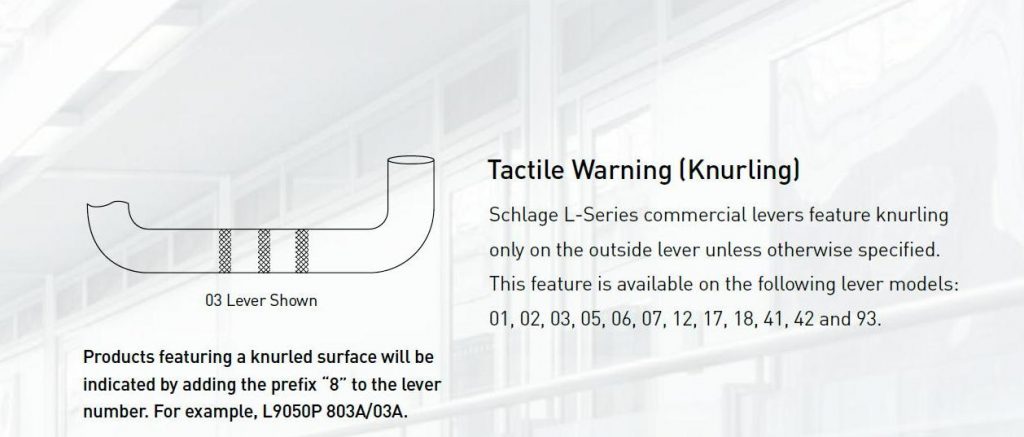 Back in the 1980s and 90s, when accessibility standards began to be applied more rigorously to new and existing buildings, some of the accessibility standards included a requirement for hardware to have a tactile warning. Although this requirement disappeared from most accessibility standards decades ago, questions still arise.
Back in the 1980s and 90s, when accessibility standards began to be applied more rigorously to new and existing buildings, some of the accessibility standards included a requirement for hardware to have a tactile warning. Although this requirement disappeared from most accessibility standards decades ago, questions still arise.
When tactile warning on hardware was common, it was typically required on doors leading to hazardous areas, like an electrical room or a loading dock. The intent was to deter someone with a visual impairment from accidentally entering an area that could be dangerous to them. The tactile warning was sometimes used on stair doors as well. On these doors, the lever on the side opposite the hazard (usually the corridor side) would have knurling or an abrasive coating on the lever.
Tactile warning has become less-frequently used because the requirement was removed from most of the accessibility standards. The majority of doors leading to these rooms are kept locked at all times, reducing the risk to all building occupants. But knurled hardware may show up in a specification, it might be required by a state or local standard, or a code official might believe that it is required for a current project, so it’s important to understand what is required by the various standards.
Read this Decoded article for more information on tactile warning, and then proceed to the review questions below.
~~~
Review Questions
1. Which of the following accessibility standards require tactile warning on door hardware?
- 2010 ADA Standards for Accessible Design
- 2017 edition of ICC A117.1
- Some state or local standards
- None of the above
2. Where are the “detectable warnings” currently required by the accessibility standards found?
- On the walking surface at some changes in level
- On doors leading to hazardous areas
- On stairwell door hardware
- None of the above
3. When hardware with tactile warning is required by the state/local code or the code official, which of the following methods would NOT be acceptable?
- Knurled lever handle
- Abrasive coating on hardware
- Abrasive tape applied to back of lever
- Warning sticker with printed text
Answers: 1 – C, 2 – A, 3 – D
